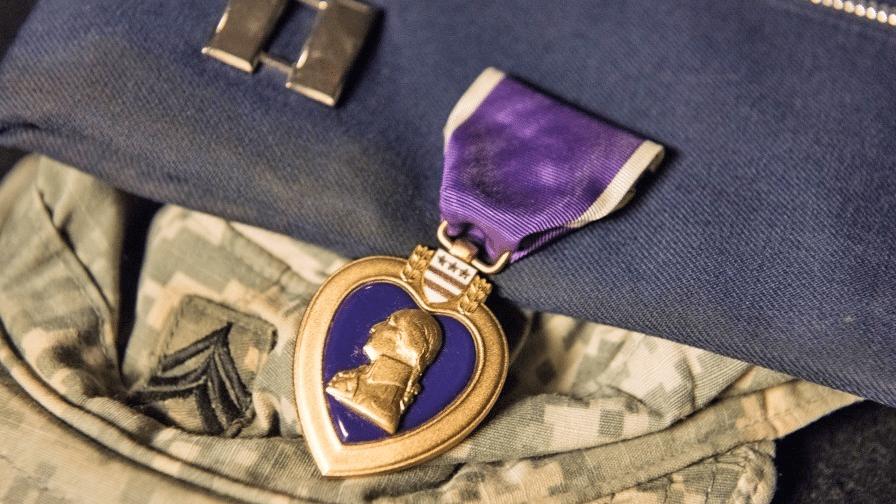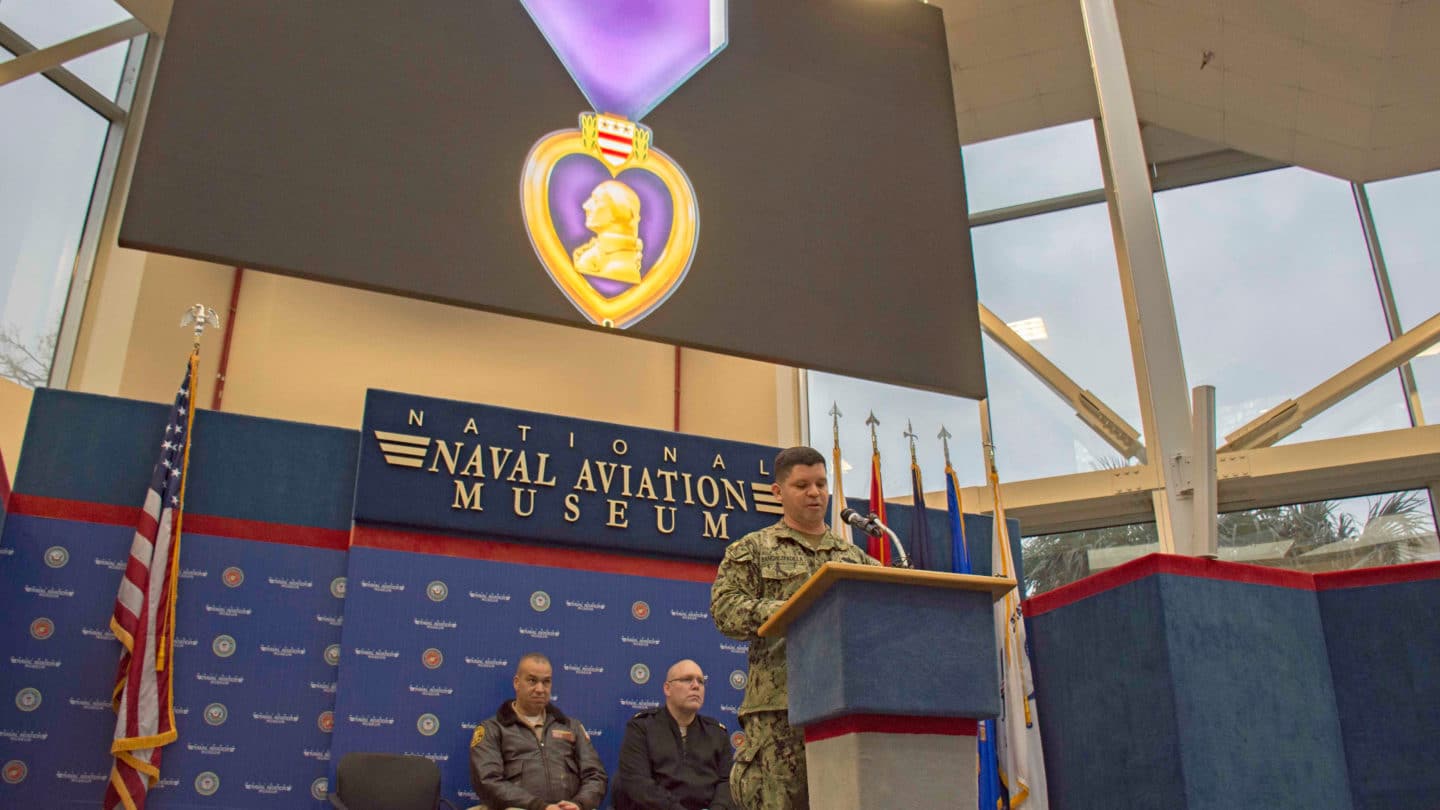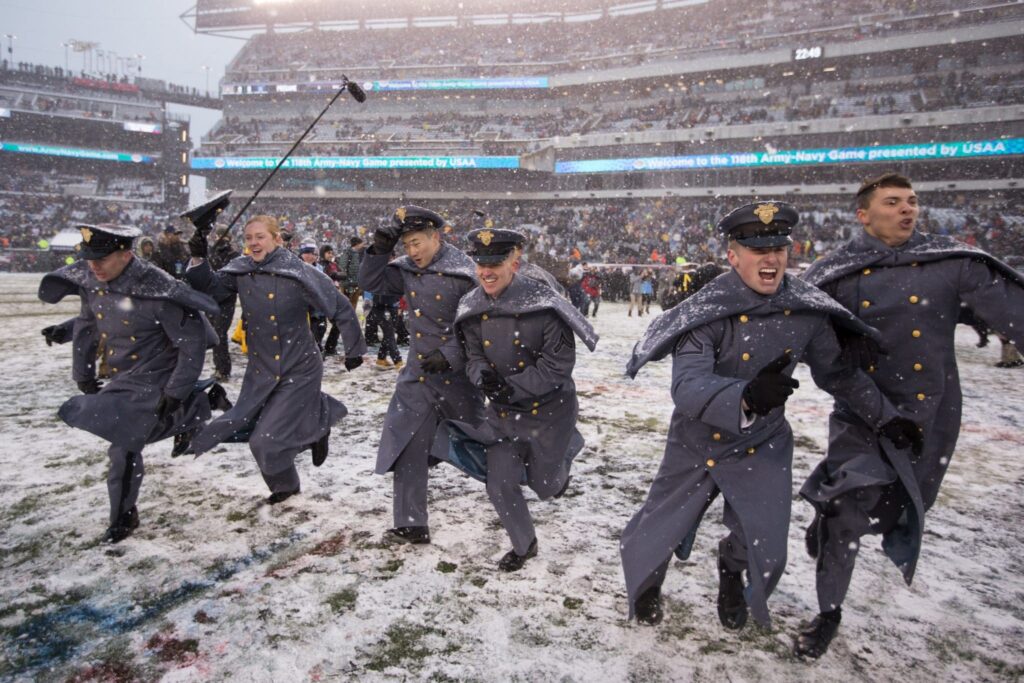
- The App
- Sandboxx News
- Resources
Learn
- Company
About
Become a Partner
Support
- The App
- Sandboxx News
- Resources
Learn
- Company
About
Become a Partner
Support
National Purple Heart Day is August 7. Each year, the day is dedicated to honoring service members who have made the ultimate sacrifice of giving...

National Purple Heart Day is August 7.
Each year, the day is dedicated to honoring service members who have made the ultimate sacrifice of giving their lives on the front lines. It also honors military personnel who have suffered a life-altering injury due to combat.
The list of Purple Heart recipients is impressive — ranging from a chief nurse who lost her right eye during a WWI hospital bombing to a Marine who refused to leave his Vietnam unit until all his men were evacuated.
It’s unknown how many recipients there are as the National Purple Heart Hall of Honor database is constantly being updated.
Below we share the history of the Purple Heart and how to pay respects to recipients.

Often referred to as the military’s oldest medal, the Purple Heart Medal is awarded to U.S. service members who have been wounded or killed in war.
It’s a combat-related medal.
As one of the most recognizable combat badges — its bright purple ribbon is hard to miss — this badge isn’t one service members hope to receive. Additionally, this medal is bestowed upon those who are injured, wounded or died while a prisoner of war (POW). Civilians can no longer receive the medal.

The Purple Heart history runs long and deep. The original honor was established in 1782 by General George Washington. Back then it was called the Badge of Military Merit.
Despite the fact that General Washington wanted the honor to be a permanent one, it was mostly forgotten about after the Revolutionary War up until the 20th century.
Here’s a look at the timeline as established by the National Purple Heart Hall of Honor:

You don’t have to go big to show your support during Purple Heart Day. Simply showing you care by recognizing the observance or saying thank you to a Purple Heart service member is enough. If you’re stumped, here are a few ideas:
Touch base with your local VFW or American Legion to see if they need help with any presentations or event organizations that honor the fallen or wounded on Purple Heart Day.
If you are nearby a local veteran cemetery, consider paying your respects to those who gave their lives. Drop off flowers or small American flags to show your gratitude.
There’s nothing more touching than flying the American flag in honor of those who have given their all for the red, white, and blue.
If you can, explore the 7,500 square foot National Purple Heart Hall of Honor
in New York’s Hudson River Valley. Visitors will have access to a World War I photographic history timeline. The site also includes a Roll of Honor database and a silent video tribute, along with other educational highlights.
The foundation was established “for the protection and mutual interest” of all Purple Heart recipients. The organization is the only veterans service organization made up entirely of combat vets. Most states have a foundation chapter. The foundation serves all veterans and their families, not just Purple Heart recipients.
When the Legion of Merit was created in 1942, the Purple Heart for “merit” essentially discontinued. Now the Purple Heart is an honor specific to combat that’s bestowed upon individuals in the name of the President of the United States.
While it’s not an honor any next of kin or active duty member wants to receive, it’s the recognition of true sacrifice our government offers.
Even years after combat, veterans are still being formally presented with medals in special ceremonies. On August 7, the Purple Heart Patriot Mission will fly in recipients from all over the country to rally around Purple Heart vets.
No matter where you are this August 7, consider taking a moment of silence for those who gave the ultimate sacrifice. And, if you’re lucky enough to run into a veteran — especially a Purple Heart vet — be sure to thank them for their service.
Do you know any Purple Heart recipients? We’d love for you to share their story below!




